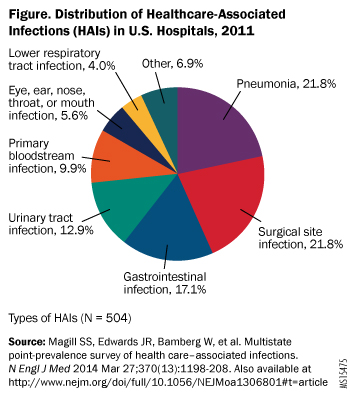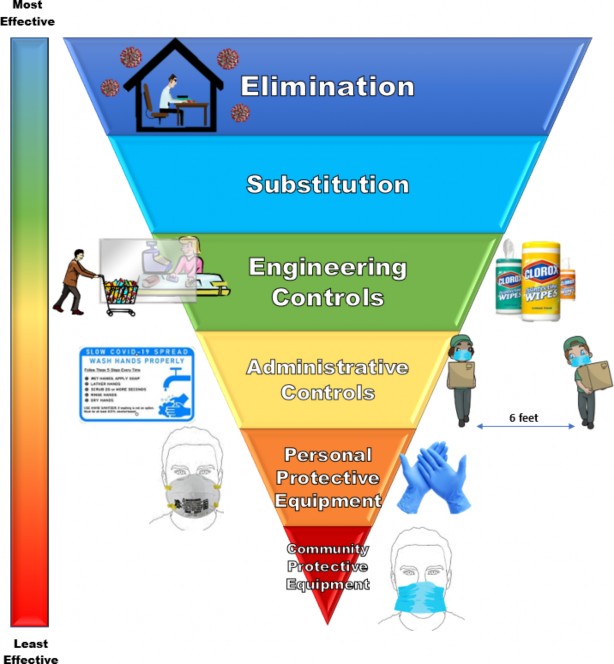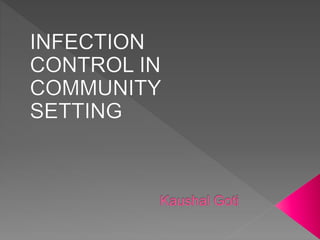Describe the Roles of Cdc and Osha in Infection Control
The ability to put knowledge into action is one way to define competence. Its role is to issue specific standards designed to protect the health of employees in the us.

Creating A Safety Culture And Infection Control Awareness In The Dental Office Perio Implant Advisory
Postmortem care facilities such as autopsy suites.

. This webinar will also identify safe injection practices intended to prevent catheter-related bloodstream infections and describe injection practices in a hemodialysis. 3 the availability of appropriate protective equipment. Beginning in 1990 CDC issued a series of tuberculosis control guidelines aimed at different settings and.
Physical distancing will be implemented along with the other provisions required by OSHAs COVID-19 ETS as part of a multi-layered infection control approach. Know current evidence-based CDC HAI prevention practices Regularly review HAI surveillance findings with healthcare providers and leadership Identify areas for prevention focus Spur new prevention efforts Measure HAI prevention progress over time Provide encouragement to continue efforts when prevention success occurs or stalls. 2 worker participation in safety planning.
The CDCs main role is to make sure nurses and other healthcare professionals know how diseases are spread and how to stop the spread. As described in Chapter 1 both the Centers for Disease Control and Prevention CDC and the Occupational Safety and Health Administration OSHA responded to the resurgence of tuberculosis that began in the mid-1980s and continued into the early 1990s. Cleaning removes large numbers of microorganisms from surfaces and should always precede disinfection.
The CDC provides instructions for environmental cleaning and disinfection for various types of workplaces including. Infection control measures are more effective than implementation of antibiotic stewardship alone. OSHAs Personal Protective Equipment standard 29 CFR 1910132 and Respiratory Protection standard 29 CFR 1910134 which provide protection for workers when.
The COVID-19 pandemic underscores the global need for motivated nursing and medical professionals who specialize in developing and implementing infection prevention and control techniques. The Ebola virus disease epidemic highlights the need to strengthen national and international systems to detect respond to and prevent the spread of future health threats. The report notes that a safety culture is created through.
These guidelines represent the minimum standard of practice recommended for safe care in all dental settings and are designed to prevent transmission of infectious agents. CDC are to be used in the care of ALL patients especially including those in emergency-care settings in which the risk of blood exposure is increased and the infection status of the patient is usually unknown. IPs need tools for serving in many roles and to accomplish prevention objectives.
1 The actions management takes to improve both patient and worker safety. However most of the infection control programs were organized and managed by large academic centers rather than public health agencies which lead to sporadic. Each of the standard precautions are written and implemented.
Infection control and retroviruses. Education and Training Provide initial annual and as per need health and safety training to practice workers Assure that educational materials that support the infection control program are present Provide training to contract employees such as janitorial services and repair personnel Ensure employee attendance at continuing education courses Evaluate the. Instead of coordinated efforts we get.
Core Infection Prevention Control Practices for Safe Healthcare Delivery in All Settings is organized into eight distinct yet interrelated infection prevention and control domainsA list of Core Practices is shown in Table 1The first four domains relate to the organizational. IG and antiviral agents are not recommended for PEP after exposure to HCV-positive blood. Describe the roles of the CDC and OSHA in infection control-CDC Federal agency that is nonregulatory and issues recommendations on health safety and security threats-OSHA is a regulatory agency.
CDC recommends using additional infection prevention and control practices during the COVID-19 pandemic along with standard practices recommended as a part. Recent guidance suggests specific infection prevention synergistic activities that relate to the CDC Core Elements of antibiotic stewardship To ensure role clarity and prevent Infection Prevention and Control. These include OSHAs Bloodborne Pathogens standard 29 CFR 19101030 which provides protection of workers from exposures to blood and body fluids that may contain bloodborne infectious agents.
Personnel Hospital United States. 10325134 PubMed - indexed for MEDLINE MeSH Terms. Healthcare facilities as part of CDC healthcare infection control recommendations.
There are two pieces that are unique to what IPs and healthcare epidemiologists. 4 the influence of group norms regarding acceptable safety practices. No authors listed PMID.
CDCs Guidelines for Infection Control in Dental Health Care Settings2003 are non-regulatory and provide overall guidance on infection prevention practices for dental health care personnel. We presume that people want to protect their patients but they need clear direction consultation and support. Unique Role of the IP.
Environmental Infection Prevention and Control Policies and procedures for routine cleaning and disinfection of environmental surfaces should be included as part of the infection prevention plan. Communication and collaboration Assessment and reduction of risks for infection among healthcare personnel populations Medical evaluations Occupational infection prevention and control education and training Immunization programs Management of potentially infectious exposures and illnesses and. CDC was able to support community national and international health and public health staff to prevent an even worse event.
This webinar will describe the essential balance between meeting immediate or emergent patient safety needs and performing all recommended infection control practices during clinical care. The primary purpose of infection control programs was to focus on the surveillance for HAIs and in-cooperate the basic understandings of epidemiology to elucidate risk factors for HAIs 1. Infection control nurses play a critical role in protecting public healthand the need for new practitioners in this specialty is more evident than ever.
And 5 the organizations socialization process for new. Employer name and the COVID-19 Safety Coordinators will work collaboratively with non-managerial employees and their representatives to assess physical distancing in the workplace. Centers for Disease Control and Prevention US Cross Infectionprevention.

Overview Of Infection Prevention And Control

Infection Control Hospital Infections

Basic Safety And Infection Control Ppt Download

The Fifth Evolutionary Era In Infection Control Interventional Epidemiology American Journal Of Infection Control

Role Of Nurses In Infection Control Dr Rs 07 04 2016

Role Of The Infection Prevention Coordinator Decisions In Dentistry

Help Break The Chain Of Infection National Foundation For Infectious Diseases

Assistant Dentist Job Description How To Create An Assistant Dentist Job Description Download This Assistan Job Description Template Job Description Dentist

Role Of Nursing In Infection Control

Role Of The Infection Prevention Coordinator Decisions In Dentistry

Covid 19 Hierarchy Of Controls Environment Health And Safety

Role Of Nursing In Infection Control Infection Control Nursing Infection Control Nurse

Chapter 19 Disease Transmission And Infection Prevention Ppt Download

Infection Control In Community Setting

The Fifth Evolutionary Era In Infection Control Interventional Epidemiology American Journal Of Infection Control

Strategies For Effective Infection Prevention Programs Infectious Disease Clinics
Comments
Post a Comment